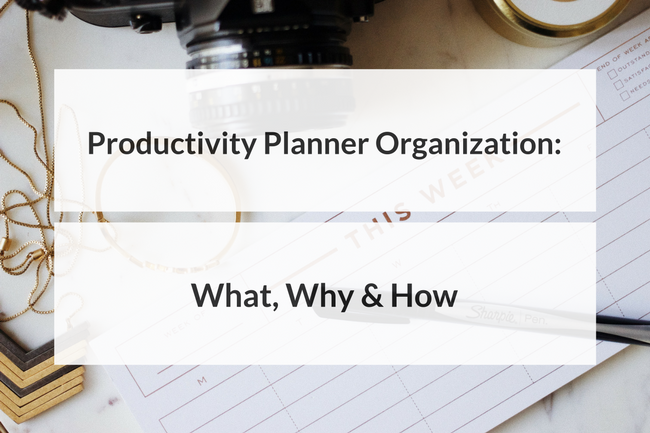If you’re having trouble getting adequate amounts of work done during each day, a productivity planner could be helpful. Unlike a normal day planner that lists your responsibilities, it helps you prioritize your time to maximize the number of tasks achieved during available hours.
A productivity planner contains your actions. By reviewing them, you can easily discover the things you do that take more time than they should, as well as highlight the areas where your output is already sufficient.
Some of the specific benefits associated with these planners include increased self-efficacy brought about by practicing reflection while writing things down. Another notable advantage is that they enforce routines. You create a positive habit by using your productivity planner. In turn, the tasks you finish become habitual, too.
Now that you understand what these planners are and why they could increase your effectiveness, we’ll look at some easy-to-implement ways to organize yours for best results. You can adapt them to meet your needs.
1. Pick Your Planner Wisely
Even if you’re not using a planner yet, you’ve probably stood in a store that sells them and checked out numerous options. When shopping for a worthwhile planner, find one that provides enough room to write and has sections to make supplementary notes or even drawings.
2. Use a To-Do List as the Foundation
The first step to using one of these planners wisely involves understanding your most essential tasks. Compose a to-do list that includes the stuff you need to get done and ensure each responsibility is in order of importance. Your goal is then to get through the list as quickly as possible without becoming sloppy.
3. Stock up on Washi Tape
Washi is a type of traditional Japanese paper made from natural fibers. It also comes in a tape form that’s available in pretty colors and patterns. By using washi tape, you can quickly decorate your planner in ways that help you keep tasks separated, track progress and more.
Try coming up with a color-coding plan that lets you find desired sections of the planner at a glance. You can even fold the tape over the edge of a page and create tabs.
Also, keep in mind you can remove washi tape after the initial placement. Consider writing your tasks on pieces of washi tape. Then, if your agenda changes and makes it necessary to re-prioritize, simply lift up a strip of tape and put the item in a different place.
4. Inspire Yourself With Relevant Images
Web designers know images increase interaction and make visitors browse longer. Pictures could also make you feel more motivated to stay on track with accomplishing your daily responsibilities. When setting your to-do list for a day, spend a few minutes looking for images that urge you to envision the outcomes of successfully finishing what you set out to do.
For example, if one of your list items is to book a facility for a conference you’re holding in a couple of months, find an image of a room filled with satisfied attendees. It should remind you that even if they’re interested, many individuals won’t book tickets for an event until they know its location. With that in mind, booking the venue could be the first step in creating a sell-out gathering.
4. Record Your Distractions
Besides aiding you in tackling the tasks that matter most, your planner can also illuminate issues with the ways you spend your time. For at least a week, monitor the things that break your concentration and note them on a dedicated page. Also, mention the amount of time you spent not involved in a responsibility due to the distraction. A typical entry might say, “Phone call from a friend about a non-work-related matter: Seven minutes.”
If you spot a pattern in the productivity lapses, investigate ways to minimize the cycle. You may need to put your phone in a drawer and mute the notifications, set boundaries with the people who place demands on your time or stop listening to music and talk shows while working.
You can also build a two-column list with colored pens or pencils. Write the distractions in red, then jot down all your productive work time in green. After taking steps to reduce the things that compromise your productivity, you should notice the content in the green column growing while the red entries become less prevalent.
These tips to enhance your productivity with a planner should get you off to a strong start. However, it’s also important to maintain a realistic perspective about the planner’s purpose. A planner won’t automatically make someone more organized; instead, consistency is the key to productivity success. Get planning!
Recent Stories
Follow Us On
Get the latest tech stories and news in seconds!
Sign up for our newsletter below to receive updates about technology trends















